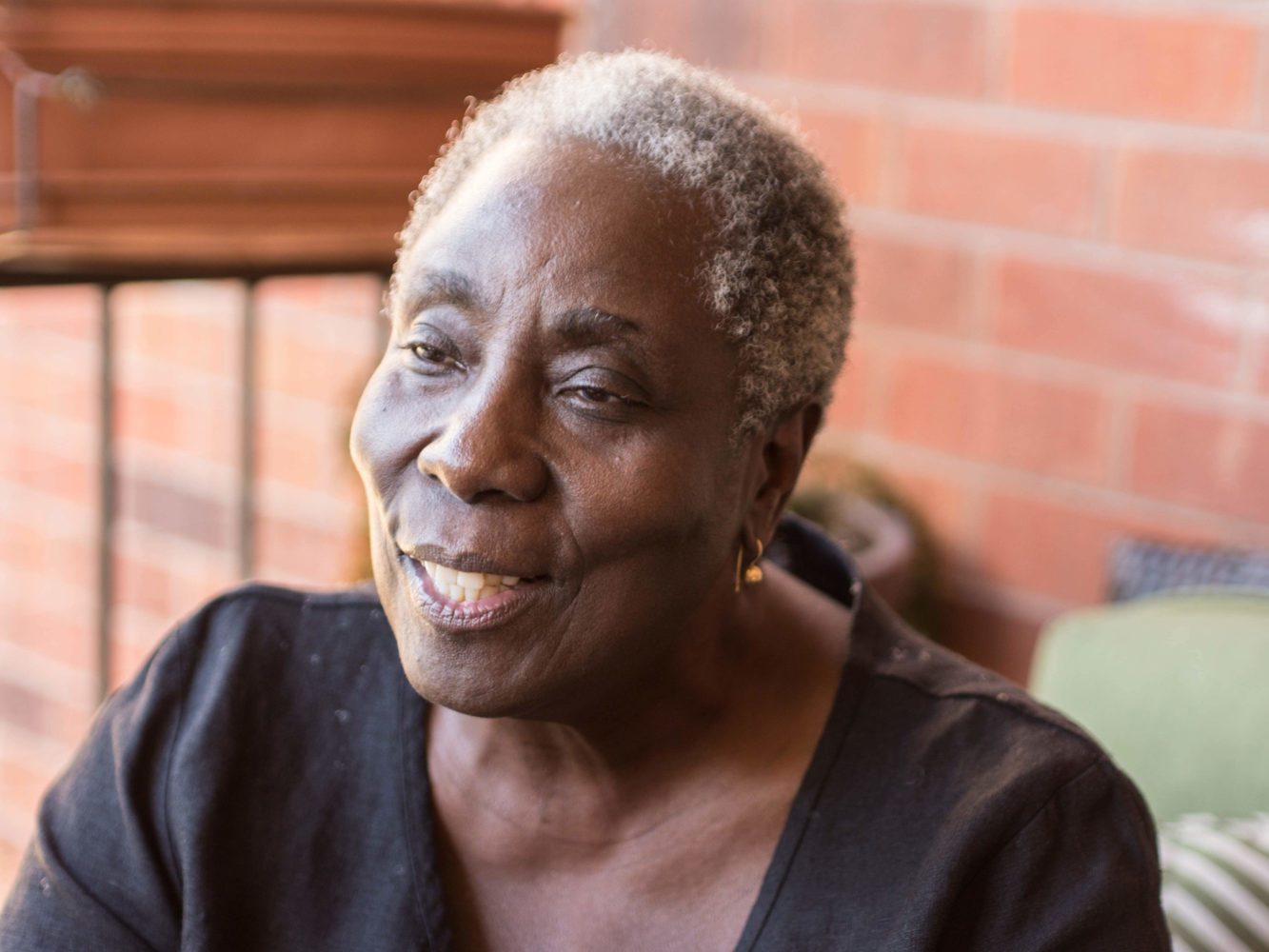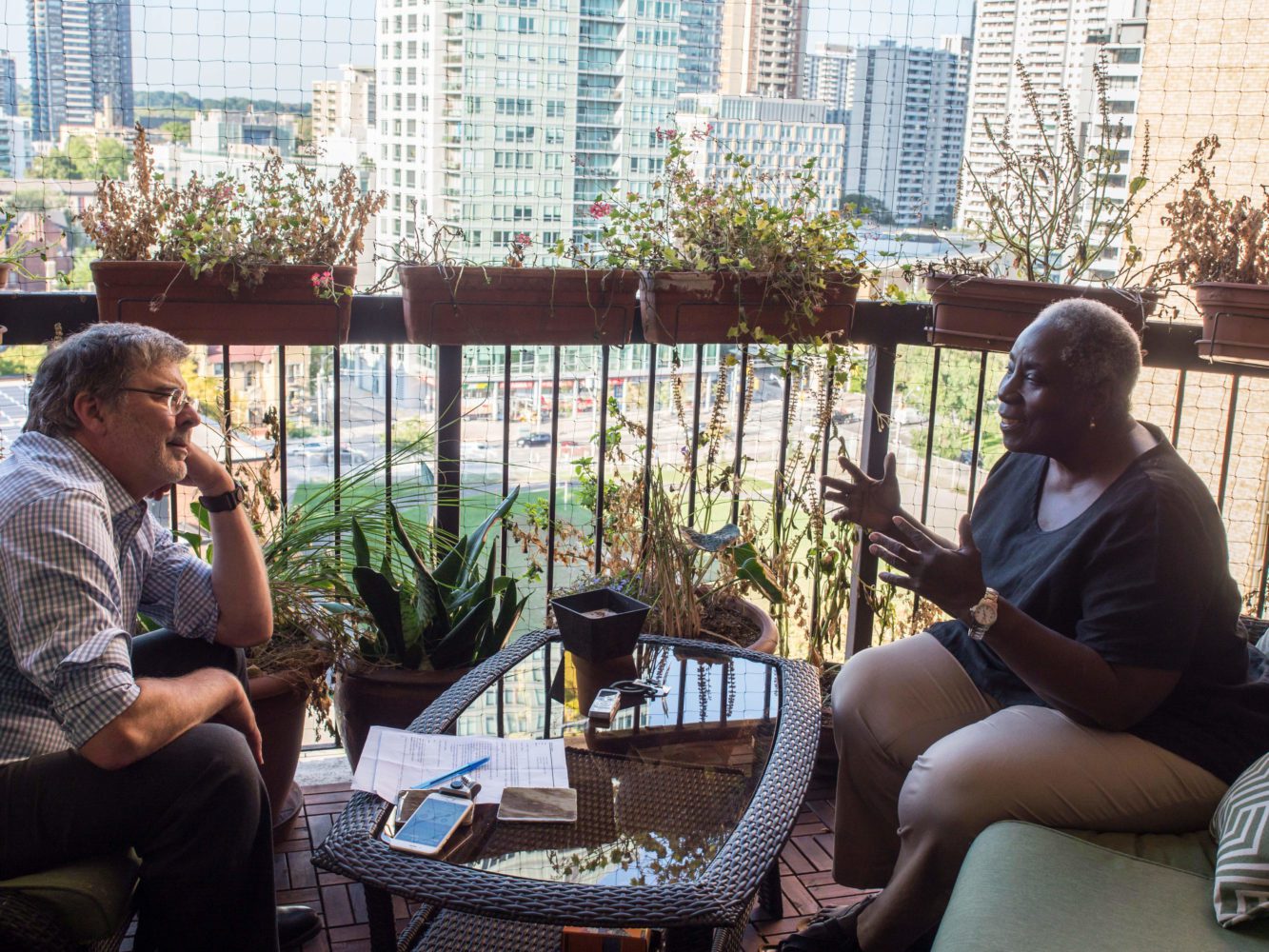Camille has advocated for social change and health equity both as an activist and as a leader of Toronto’s Local Health Integration Network. She discusses what’s changed in health care and what still needs to change.
“I was 20 when I arrived in Canada from Jamaica as a single parent. My first job was as a ward maid on the private patient pavilion at the Toronto General Hospital in the late ’60s.”
I applied for a job as a ward clerk and was told that I couldn’t do that because I was a black person. All hospitals have wonderful histories that they never write about!
“The private pavilion had its own silverware and crockery. They had afternoon tea! The ward maid washed the patients’ medicine glasses, ran to the lab, picked up the blood, served food to the patients and distributed flowers. At night, you cleaned the rooms.”
“The patient I remember most clearly was really, really ill and extremely racist. I had to accept her abuse and couldn’t respond because she was sick. I couldn’t be my usual Jamaican self, which would have been to get up in her face. That was very, very challenging.”

“In Jamaica class was important, but so was colour. The lighter you were, the more likely you were to get the better jobs. One of my high school teachers, who was black, told me, ‘You are here on a scholarship. You need to decide whether you are going to prove them right or wrong. They expect you to fail. Do you have what it takes to prove them wrong, to succeed? I am here to help you.’ That always stuck with me. Just having somebody who looked like me telling me that I could succeed, but acknowledging that the expectation was that I wouldn’t, was extremely powerful.”
My parents felt that we have an obligation to make it a little easier for somebody behind us. For me that’s what equity is all about. When you are doing whatever it is you are doing, you look back to see who is struggling and you try to see how you can make it a little easier for them. When you open the door, you’ve got to bring at least one person through the door with you.
“I always argue for the community because everything is so hospital- and acute care-focused. People spend most of their lives outside of the walls of an institution, and they need care and support where they live.”
Has recognition of that changed over the last 20 years?
“Yes, a bit. George Smitherman was the first [Health] Minister that really advocated for the community. But I am concerned that things are slipping back to be very acute-care focused. When money gets tight, people seem to become more conservative, and conservative in healthcare is back to hospitals and docs. We hear a lot about primary care, which is important, but not as much about all the services that are needed in the community.”

We often talk about immigrants and refugees as one group. They are not. Immigrants have a whole different set of needs and trajectory than people who are refugees.
“We also don’t consider the time of immigration. In the ’60s there was work. So people weren’t as anti-immigrant as they are today, when Canadians are struggling.”
“We have always had refugees coming in, but they have not gotten the same profile or attention as the Syrians. This doesn’t get talked about a lot. The Syrians have clearly experienced a lot of trauma. But when you look at this through an equity lens, you can’t help but think there’s a lot of attention to this group. I have just a little bit of discomfort about that. Why did some Sudanese, for example, not integrate that well? Is it because we didn’t give them the same kind of supports that we are giving the Syrian refugees?”

“I think we have lost a lot of capacity in government to do good policy. I used to see folks in government who were committed to a cause and would work for years to see it through different political cycles. The attendant care program is an example. You had a few policy folks that recognized that people with physical disabilities needed attendant care services, got that policy written and then got it funded. That took a long time, but the Ministry carried that policy.”
The most significant changes that serve the needs of people, such as a minimum wage, have been made by bureaucrats in government. Now we are seeing a shift from government leading those changes, to providers having to fight for them.
As a community activist, I didn’t think I’d hear you advocating for top-down government change.
“You need the combination. There are people in government who will carry the community’s agenda even though they are not carrying a placard at the front of the line. An example would be Ontario’s change in providing health care to refugees. A lot of community folks protested, but it was an Assistant Deputy who actually carried the policy, against the resistance of some of her colleagues. It was that mixture that I think made it successful.”

What’s better in healthcare than 40 years ago?
“When I walk into the Toronto General and look around at the staff, it’s wonderful! They reflect the people and the community, and I take great pleasure in seeing that. However, we’ve got a problem because they are limited in how far they can rise. That’s the next fight.”
“The people who deliver healthcare should reflect the people who use healthcare, and that means across all levels of organizations. At this point, most of the CEOs and senior staff are white.”
“What I don’t see is the mentoring of directors from different ethnicities to move up. It’s very hard for the directors to break through to senior leadership.”
“Nobody deliberately says, ‘We’re not moving that person.’ But the criteria we use about who gets moved up are about who belongs to which club or group. And very few people talk about those soft things of influence and fit.”
I don’t understand why it is so hard to get people to focus on equity.
“I think it is obvious that the sustainability of a healthcare system is based on addressing equity because when we ignore poor folks they turn up in the healthcare system later, when they are more costly.”
“We can pinpoint poor neighbourhoods where people with diabetes aren’t being well treated. We know if you are poor or a person of colour you tend to stay longer in hospital. But we are not doing much to specifically target those people. I heard somebody say the other day that the government is not sincere because how can you say you put patients first when you have wait lists? My response was, ‘Some people would like to be on the wait list!’”
“When we talk about equity, people often think it only means immigrants or people of colour, and that frustrates me. If I go to Peterborough or Burlington there are a whole bunch of poor white folks who aren’t getting equity of access to services. Because they are not all in one big complex, we tend not to see them.”
“When money is tight, people ask why we are spending money on certain disadvantaged groups. My bias is that people are self-centered and they worry that this will be a loss to them. It’s not at a conscious level; people don’t deliberately say that. But I don’t think healthcare is sustainable if we don’t focus on the causes of disease in specific disadvantaged groups. We will just provide more acute care, and that sucks money.”


The comments section is closed.